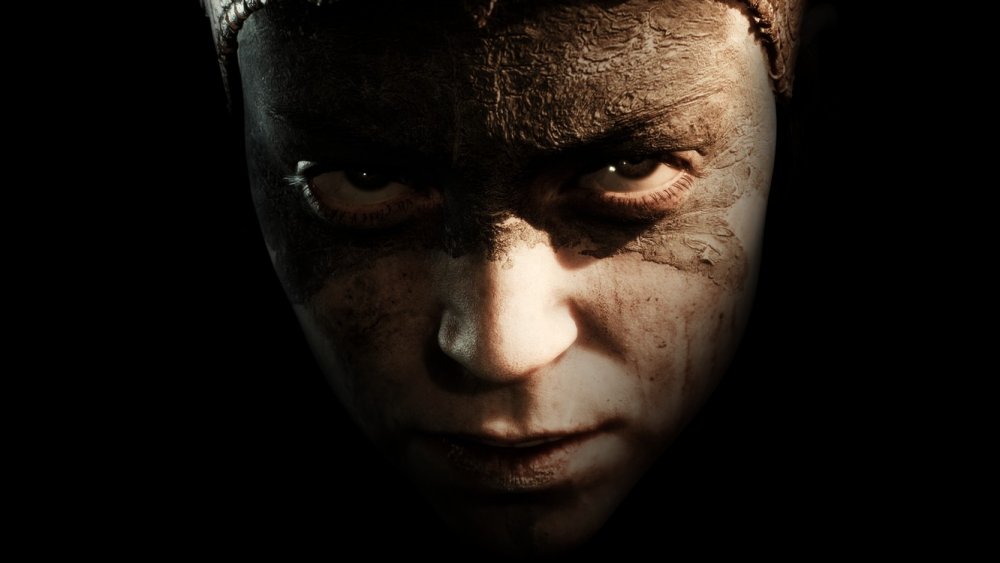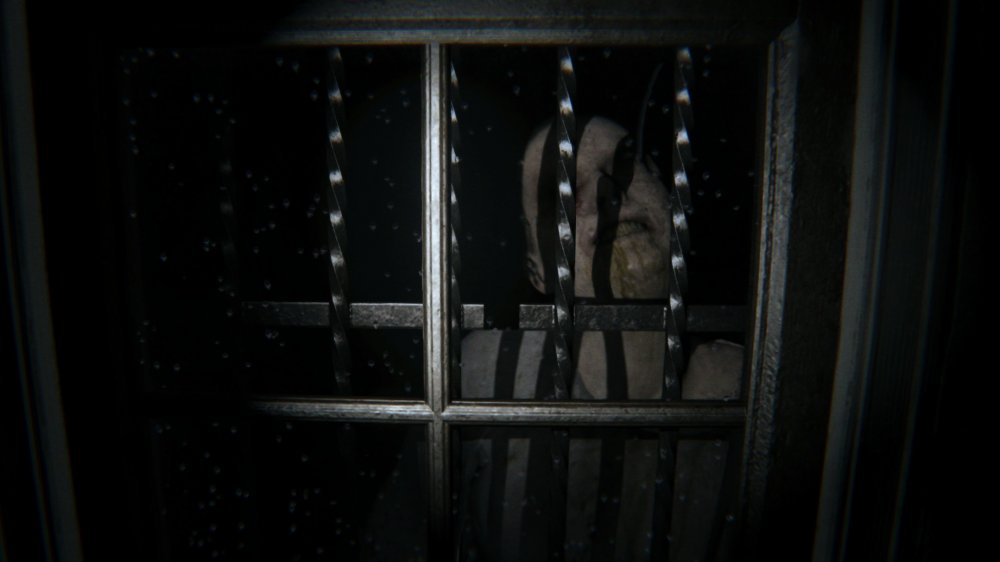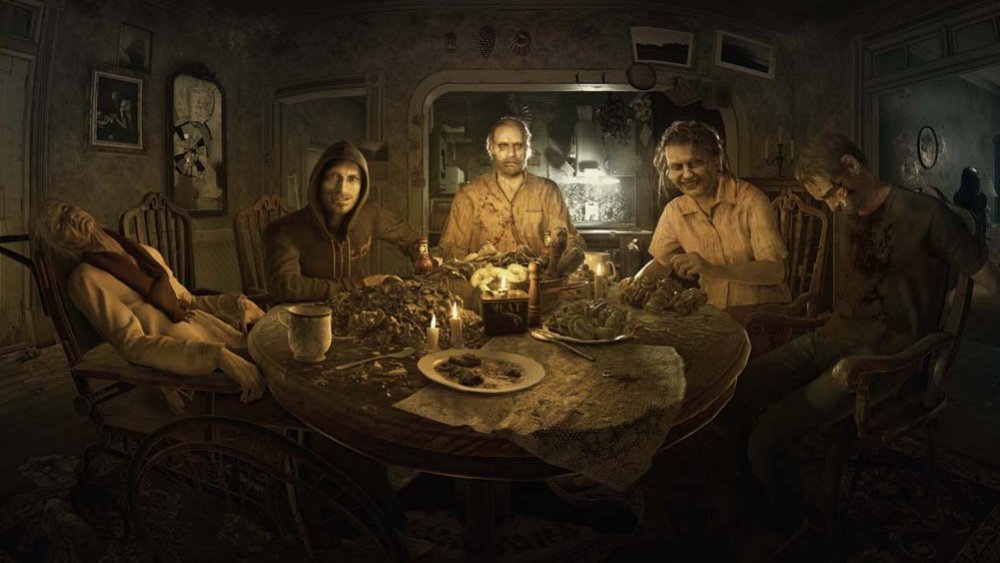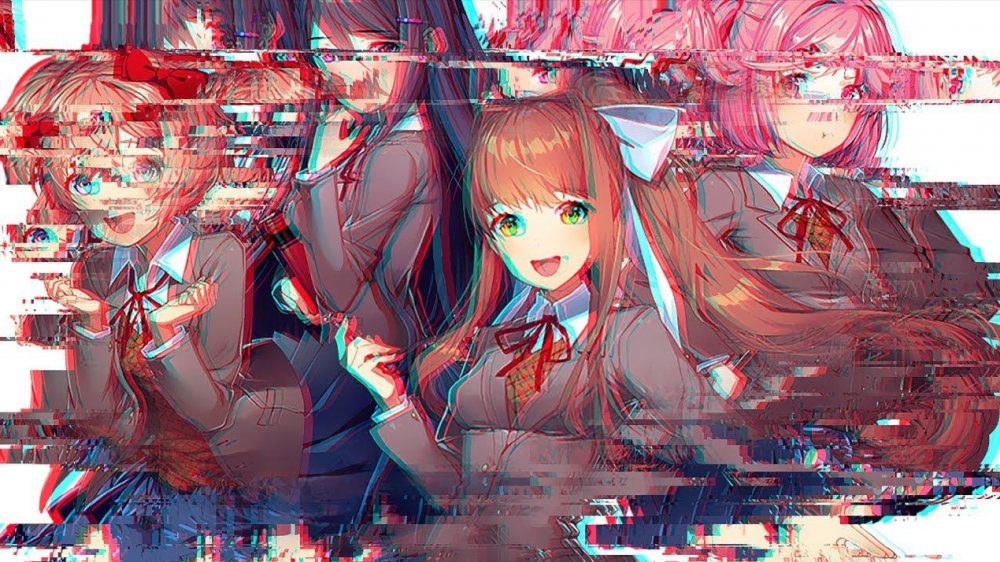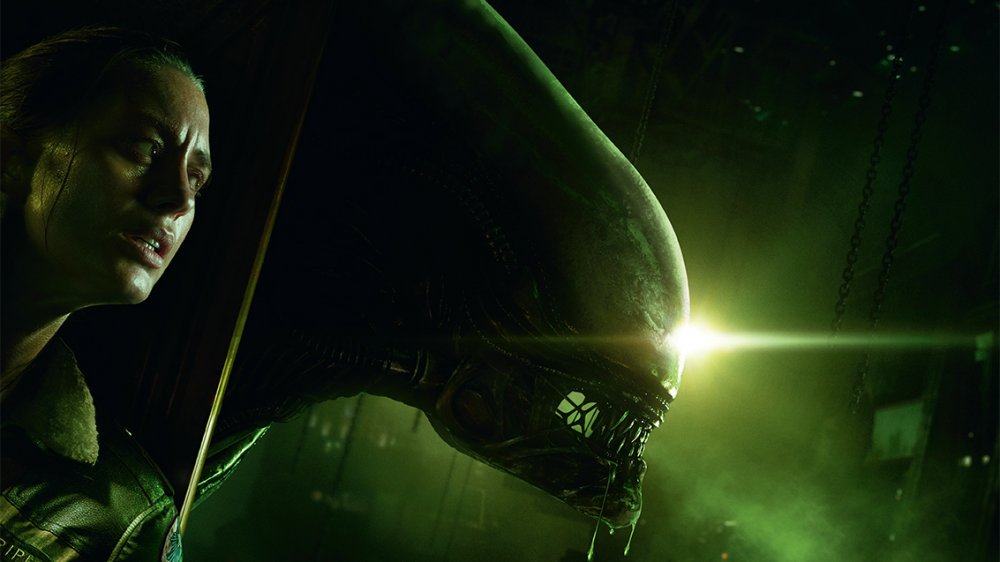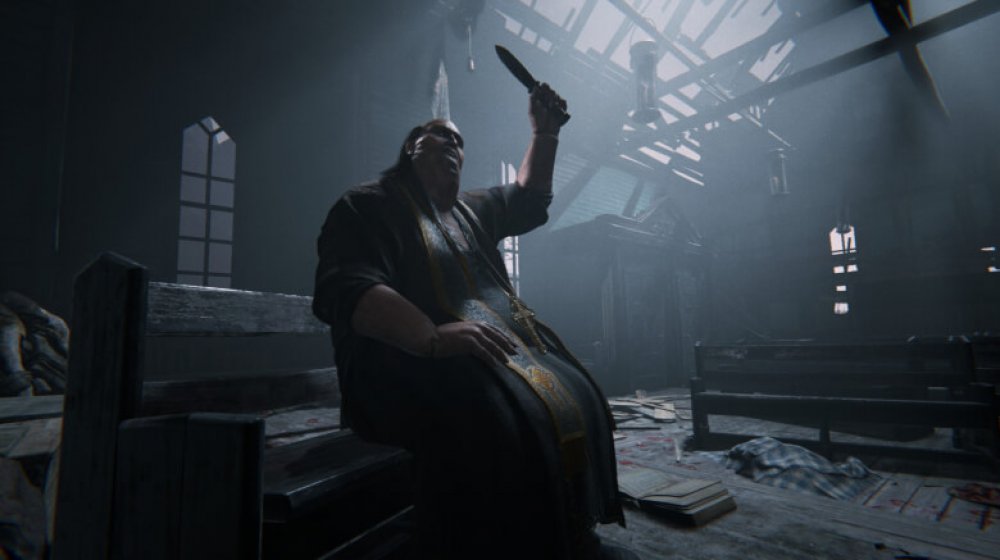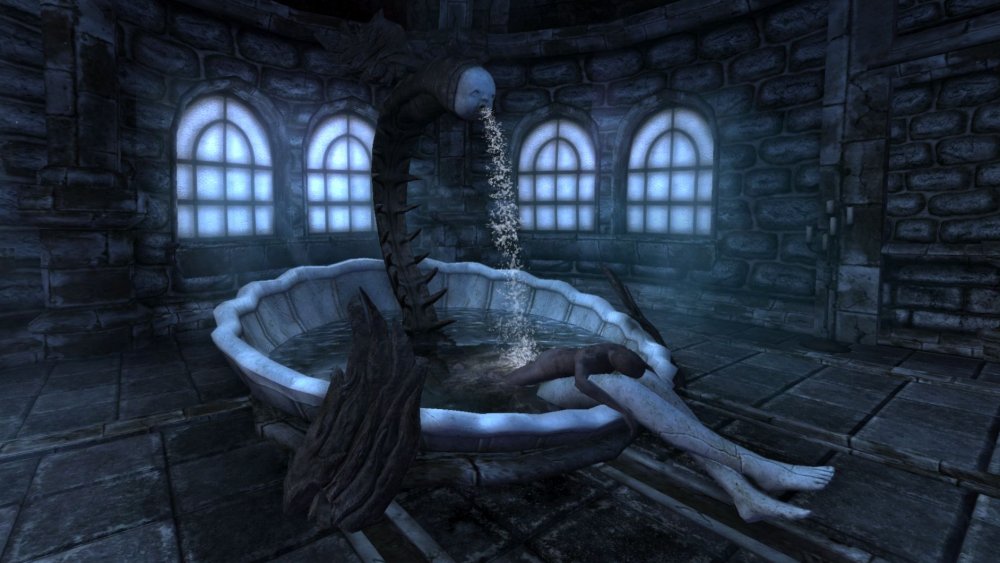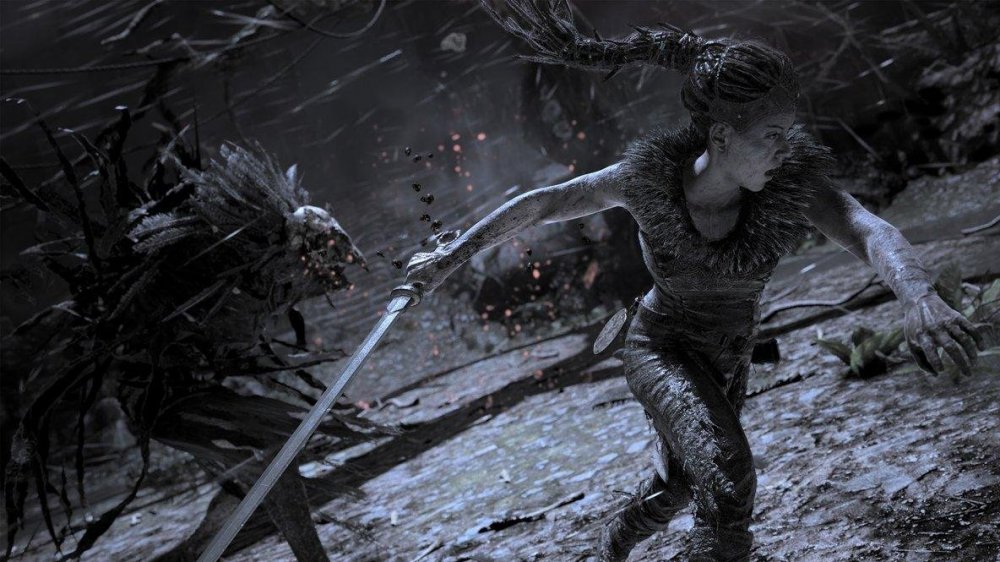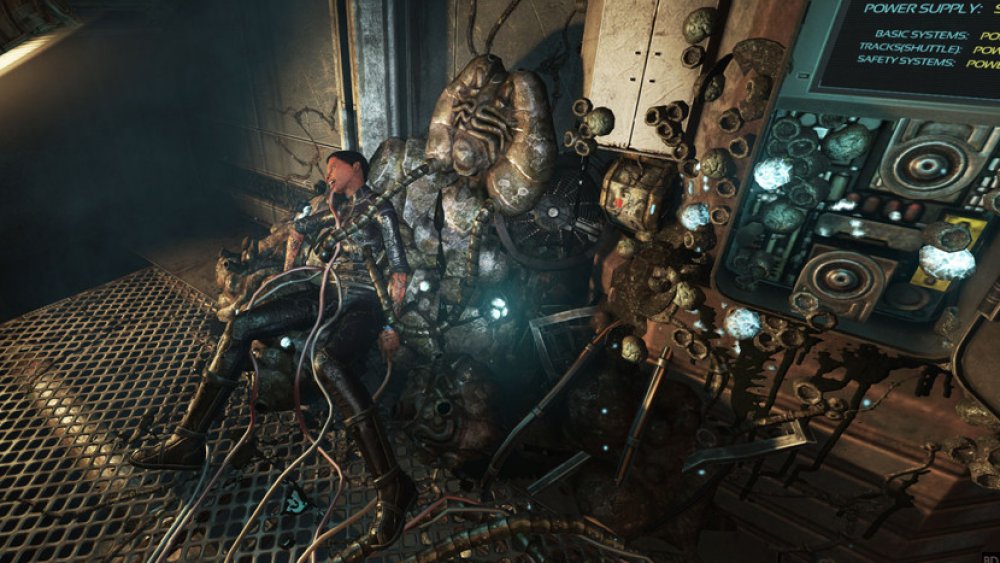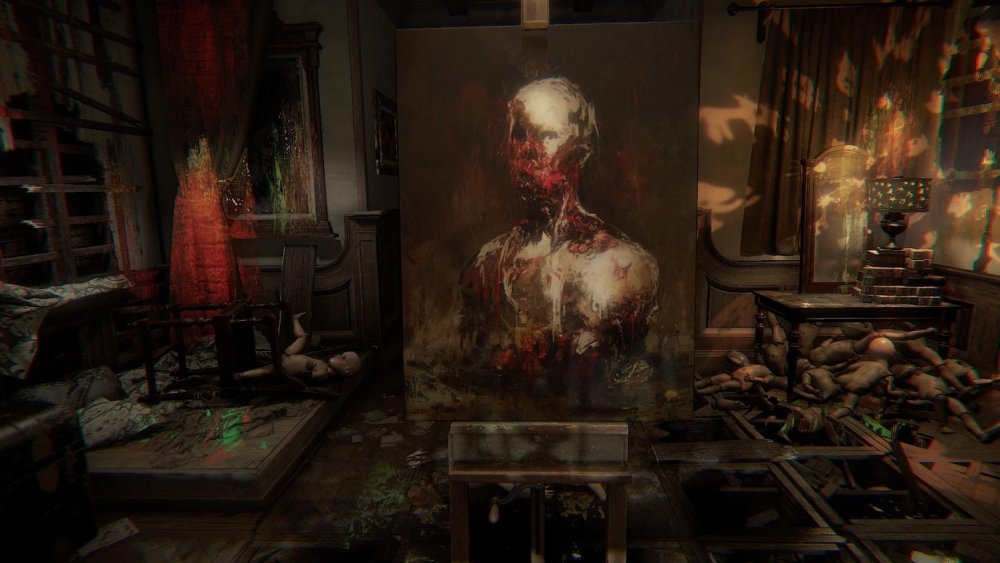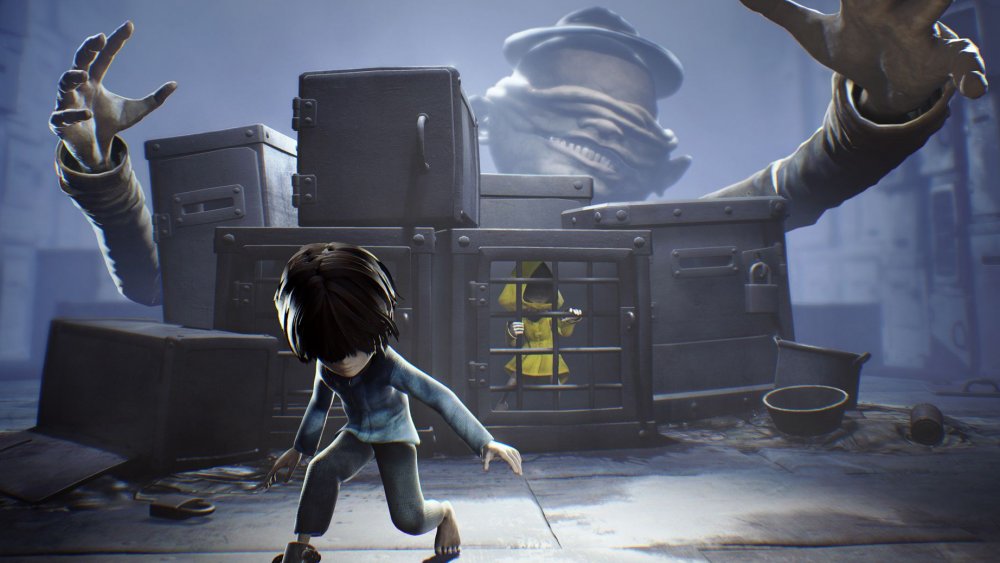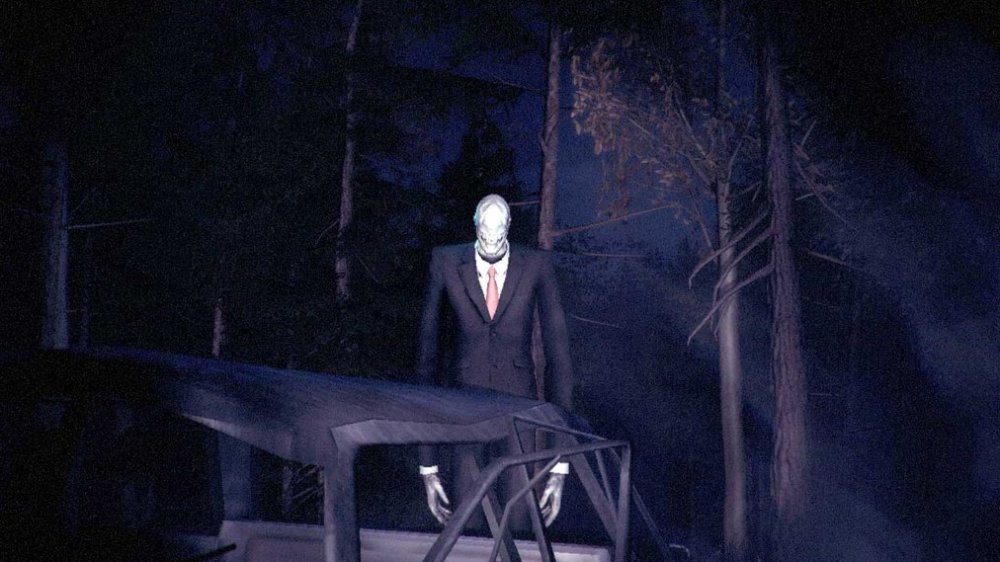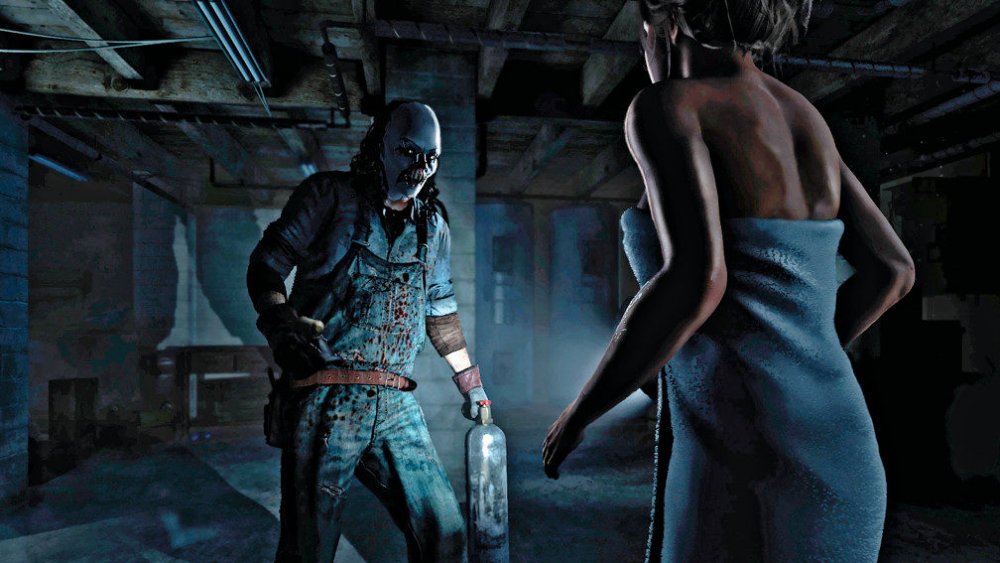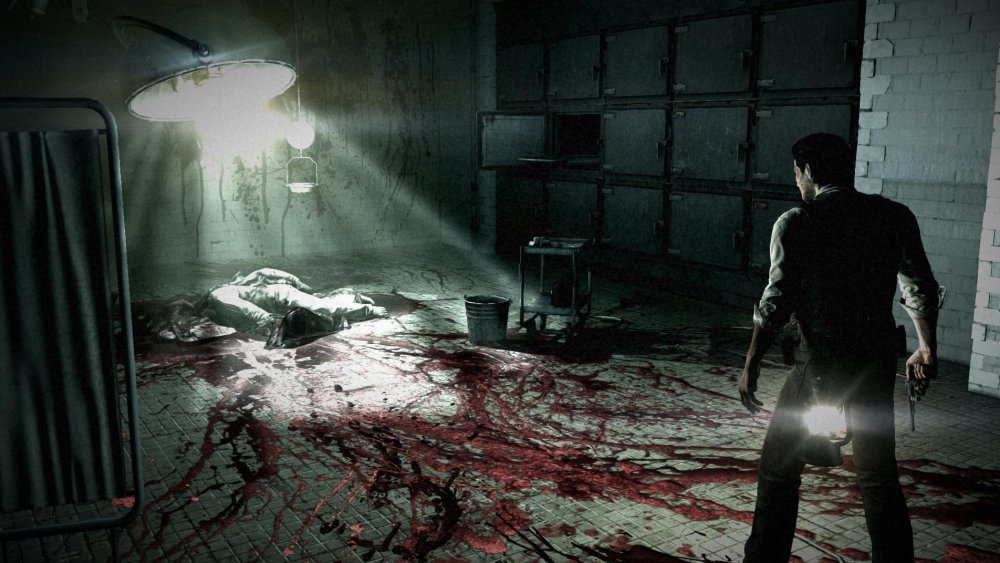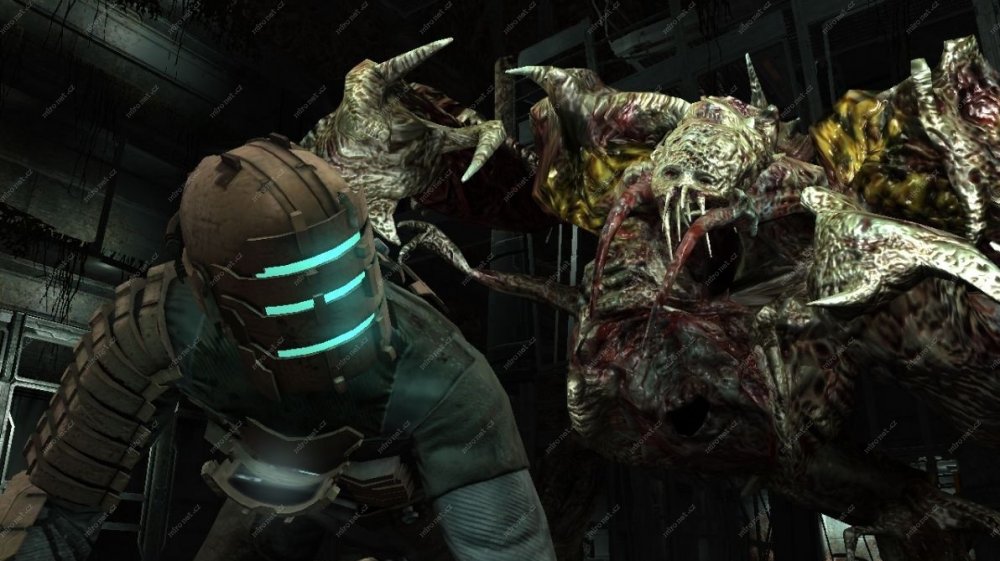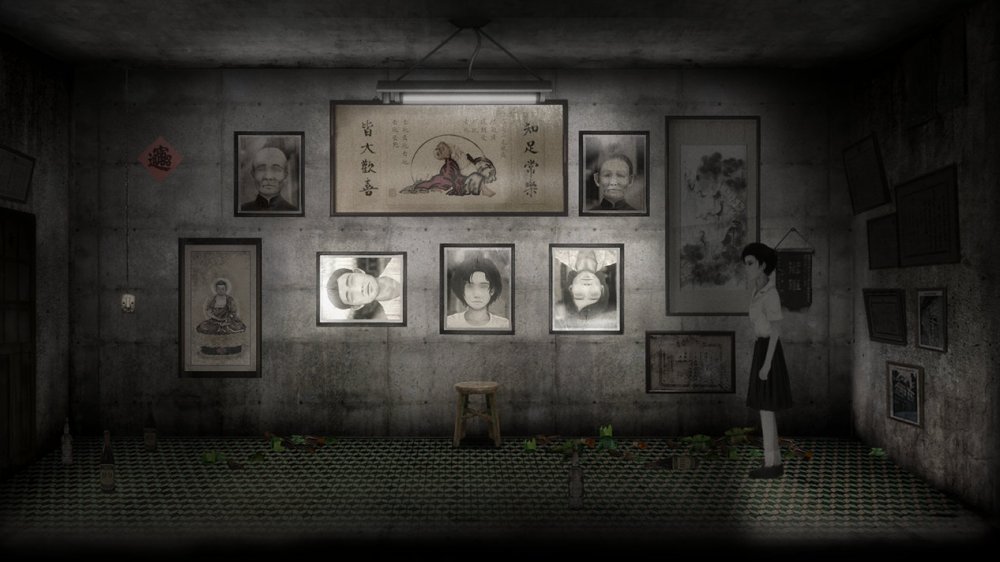The Creepiest Games Of The Last Decade
The horror genre will continue to thrive as long as there are things that go bump in the night and unanswered questions that keep you awake. It's so easy for these narratives to get under your skin and poke and prod at your most basic worries and fears. Sometimes, horror games are content to hand you a shotgun and say "Go, my child. Shoot your fears in the face." Other times, they strip you and your characters down to the bare essentials and give you a real struggle.
There's room in the genre for both types of games, and the last decade blessed the world with plenty of hair-raising and spine-tingling titles. From sequels to beloved franchises to all-new nightmares cooked up by some of the sharpest minds in gaming, here are the creepiest games of the last decade. Pull up the covers and switch on that flashlight. It's gonna get spooky in here.
P.T./Silent Hill
Oh, what could have been. P.T. caused quite a stir when it hit the PlayStation Network in 2014. Though a short experience, this playable teaser (hence the title) for Hideo Kojima and Guillermo Del Toro's cancelled Silent Hill installment was the stuff of nightmares. Following a protagonist through a house of infinite hallways and confusing visions, the deceptively simple story of P.T. was described by Bloody Disgusting's Michael Pementel as "an extraordinary work of horror." He added: "[P.T.] has become a blueprint for not only how to establish genuine chills and a creepy atmosphere, but that it is essential to take risks."
Though Konami cancelled the game and removed P.T. from the PlayStation store, it continues to inspire fans to show their love for the property, spawning fan films and remakes. Five years after its original release, one curious gamer even discovered another secret the game was hiding: Lisa, the ghost apparition that keeps popping up, is actually following the protagonist at all times. In other words, there's nowhere to hide in P.T.
Resident Evil 7: Biohazard (VR)
Following the more action-oriented Resident Evil 6, critics and fans doubted whether the once-terrifying franchise could regain its horrific bite. They were proven wrong when Resident Evil 7: Biohazard chewed its way onto the scene in 2016. Resident Evil 7 is grueling horror at its finest, scaling back from the increasingly ridiculous series mythology, giant explosions, and quick-time event battles of the preceding entries. Biohazard brought the series back to its roots. "The small-scale focus on a central location and an emphasis on survival over flashy combat creates a dark, oppressive, and frightening atmosphere that's long been absent from the series," wrote Kotaku's Heather Alexandra.
To make the scares even more intense, the game literally gets in players' faces in the VR version. Resident Evil 7's first-person perspective lends itself perfectly to virtual reality, with every knife jab and near-miss feeling more urgent than ever. The base game is already unsettling, leaving you wanting a shower after you play, but the VR version is like walking around in a nightmare.
Doki Doki Literature Club
Though Doki Doki Literature Club looks like a run-of-the-mill Japanese dating sim, the game hides a terrifying secret. Underneath its cutesy surface lies a metafictional nightmare about characters realizing they're imaginary and refusing to be disposable in the way that such a game would normally dictate. The title is full of fake glitches and bugs designed to make you believe your game genuinely has become corrupted. In fact, one of the game's endings can only be accessed after deleting a character's file, just to hammer home how wrong the whole thing is meant to feel.
"As a work of horrific metafiction, Doki Doki Literature Club ... builds moments based on what is assumed to be your understanding of the genre's tropes and the fundamentals of interactive media," wrote Polygon's Victoria Rose. In other words, Doki Doki Literature Club is frightening because it knows what gamers expect from a dating sim visual novel and does the opposite.
Alien: Isolation
Several action-oriented video game adaptations of the Alien franchise have emerged over the years. That's not necessarily a bad thing, considering how much gamers love to blow stuff up. In contrast, Alien: Isolation tells a truly bone-chilling story that has more in common with the original film. Instead of hordes of enemies from titles like Alien vs. Predator, Isolation pits you against a single, seemingly-unstoppable xenomorph. You must sneak through the derelict ship the alien has attacked, which feels much more intense than simply firing into wave after wave of faceless monsters. In fact, weapons are essentially pointless in this game. You're not trying to fight. You're trying to survive.
"Alien: Isolation is a re-examination of what horror and the fragility of character is in gaming, hammering the notion that you're trapped, and with no way out," wrote GameSpot's Alessandro Fillari. It's a shame Isolation didn't sell particularly well, as it felt like the first authentic Alien game in quite some time.
Outlast 2
The first Outlast offered a refreshing take on found-footage storytelling and survival horror gameplay. It was rightly hailed as one of the scariest games ever made, but there's just something about Outlast 2 that felt more wrong. The game played with flashbacks and hallucinations to an even greater extent than the first installment, which often made the characters — and, by extension, the player — unable to distinguish between real and imagined horrors. Even the game's finale wasn't as cut and dry as you might hope, causing the harrowing story to stick with you long after the credits rolled.
While the evil cultists in Outlast 2 make for scary villains, it's the moments when the protagonist finds himself completely alone that the game really makes you uncomfortable. "The shanties, lakes and mountain paths in the game are full of bloody environmental storytelling, the kind of body-parts-scattered-everywhere stuff that worked to keep my sense of unease growing even as it pushes well past plausibility," wrote Polygon's Philip Kollar.
Amnesia: The Dark Descent
Amnesia: The Dark Descent is an indie gem that kicked the decade off with a scream. Following a character with no memory (and no weapons) as they make their way through a haunted castle, Amnesia: The Dark Descent gives you every awful thing it promises in its title and then some. The puzzles are interesting and the lore you uncover along the way is engrossing, but when the monsters finally come — and they will come — the game becomes a mad dash for survival. "Chases are just hideous, the monsters faster than you as you race for a door to slow them, or a dark room to hide in," wrote Rock Paper Shotgun's John Walker. "My leg muscles tightening in absolute fear as I almost touch my nose against the monitor trying to reach safety."
Not only is Amnesia: The Dark Descent a high point in the horror video game genre, it also spawned some of the funniest reaction videos ever from the poor souls who weren't prepared for the horrors within. The developers added an even higher difficulty setting in late 2018, making now the perfect time to make the descent.
Hellblade: Senua's Sacrifice
Hellblade: Senua's Sacrifice gets the majority of its scares from how much it messes with your perception. Its narrative examines themes of mental illness, featuring a protagonist, who, suffering from psychosis, sees and hears things that aren't there (and may occasionally lose her ability to fight). The game even lies to you about what to expect from it, including threatening to delete its own save data. The result is an experience that is truly unsettling, and that's before you even unpack the fact the heroine is on a journey through Hell.
The game excels at using audio to throw players off-balance, piping in snatches of dialogue and whispers from characters you can't see. Beyond offering a chilling glimpse at the underworld, Hellblade wants you to understand the uncertainty and confusion with which Senua goes through her life, resulting in an immersive horror experience that is even better when played with headphones on.
Soma
From the masterminds who created Amnesia: The Dark Descent comes Soma, a game that feels very different from Amnesia, but just as unsettling. Rather than being as in-your-face as Amnesia, the scares and dread in Soma come from the feeling of utter hopelessness that permeates every moment of the game. Being trapped at the bottom of the ocean elicits some very primal fears, as do the many sequences of body horror with characters transforming into monstrosities against their will.
Much like Amnesia, the name of the game here is avoiding or outsmarting your enemies. There's no traditional combat in Soma, which heightens the sense that you and your character are completely unprepared for the horrors you face. The game consistently presents you with difficult choices to make that reinforce the "us or them" mentality of the narrative, causing your character to do some inhumane things to survive. The experience is so harrowing that a "Safe Mode" was added two years after release, allowing players to experience the game's narrative without having to deal with the many difficult creature encounters.
Layers of Fear
Layers of Fear may not have any climactic battles with monsters, but the oppressive environment goes a long way toward making this game feel just as frightening as any Resident Evil title. The many, many jump scares (most of which involve some kind of death trap or another) also make the game a memorable experience.
Even the house where the story unfolds shifts over the course of the game, leaving you off balance and ill at ease. "Much of the scares come from exploring the mundane, only to watch it twist and turn into something unrecognizable and horrible," wrote Kotaku's Patricia Hernandez. Layers of Fear constantly plays little tricks like this, removing doors that used to be there and warping paintings into grotesque mockeries of the human form. It's a game that never lets you relax as you venture deeper and deeper into the madness of the old mansion.
Little Nightmares
Though light on plot, Little Nightmares features innovative and imaginative designs for its stages and enemies. Beyond that, the game does a splendid job of making you feel like you're constantly being followed as you guide the young protagonist, Six, through a gauntlet of hideous monsters. Developer Tarsier Studios used sound design and camera angles to make the game feel truly unsettling. "Puzzles, characters, environments, and controls activate our bodies to create physical symptoms of hyper-aware anxiety, so when the creep-outs, jump-scares, and mad dashes from Ito-esque horrors punctuate Six's escape, we truly feel them," wrote Peter Counter of Everything Is Scary.
Many scares found in Little Nightmares are drawn from actual phobias and real-life concerns, warping these concepts into unrecognizable creatures. Much of the gameplay involves Six's attempts to sneak past these monsters without being seen, reinforcing feelings of fear and fragility. Little Nightmares succeeds in creating a near-constant atmosphere of dread, which makes it quite memorable.
Slender: The Arrival
The gameplay of Slender: The Arrival is as basic as it gets, but it manages to ratchet up the tension and the world-building of its predecessor, Slender: The Eight Pages. "While a little rough around the edges, The Arrival is fascinating because it plays on modern fears through a modern medium," wrote the GameSpot staff. The story follows two childhood friends and their shared trauma surrounding their experiences battling the seemingly unstoppable being known as Slender Man. Though it's run-time is relatively short, the game also features several secrets, including a hidden level that paints an even more sinister picture for the characters in the game.
In the wake of the awful Slender Man stabbing of 2014, which involved two young girls attacking their classmate in service to the fictional character, it's an even more harrowing proposition to revisit this game. Still, those who dare to venture into these woods are in for a frightening experience that doesn't overstay its welcome.
Until Dawn
Until Dawn takes multiple genres of horror and melds them together in unexpected ways. It also gives you almost complete control over the way the story turns out, with every move and dialogue choice altering the fates of everyone involved. A stellar cast helps sell the story, including Hayden Panettiere, Peter Stormare and future Best Actor Academy Award winner Rami Malek. These actors give their all to the bizarre tale of stranded miners, ancient curses, and deformed monsters.
Much of the game's success comes down to the painstaking care developer Supermassive Games took to ensure that every action has a consequence, with the script reportedly running close to 10,000 pages at one point in production. Until Dawn feels like the ultimate interactive horror film, a feeling exacerbated by intense motion control sequences that put you in the position of the characters as you try to be as still as the grave.
The Evil Within
At first glance, you'd be forgiven for expecting The Evil Within to be another riff on the tried-and-true Resident Evil formula, especially since its directed by Resident Evil series creator Shinji Mikami. The Evil Within differentiates itself from the classic survival-horror series by focusing on the protagonist's inner landscape. The story loves to play mind games, leaving you guessing at what is real as you desperately scrounge for extra bullets or try to find the best place to hide from the monsters at your heels.
The Evil Within also includes an interesting upgrade system that plays with the more dreamlike aspects of the narrative, allowing your character a restful retreat from the action while spawning even more questions. Even these seemingly safe spaces involve strapping the lead character into an electric chair to heighten his senses and skills. The game is full of interesting choices that set it apart from so many other titles in the genre. As The Xbox Hub said, these scenes "wouldn't make much sense in a Resident Evil game, but with how erratic the world of The Evil Within is, it fit right in."
Dead Space 2
Dead Space 2 is a little more action-focused than its predecessor, but that doesn't make it any less horrifying. The game toys with feelings of PTSD and survivor's guilt, offering up a protagonist who has truly been scarred by his experiences. It raises the stakes in some interesting ways and is designed to have an atmosphere that feels just as oppressive as the first installment, with Kotaku's review drawing attention to Dead Space 2's "brilliant lighting effects and sound design tricks that regularly unnerve."
All this pales in comparison to a particular sequence in which a character must undergo laser eye surgery. One false move and you will be treated to one of the most brutal death scenes in gaming history. As Critical Hit so eloquently put it: "Forget about killer space monsters, rabid legions of homicidal humans driven mad by exotic science and the pure terror of survivor's guilt running rampant across your psyche," this is easily the high mark of gut-wrenching fear in the Dead Space series.
Detention
Though many games use fantastical creature designs or interesting sound cues and production choices to scare you, Detention sets itself apart by drawing on a dark point in history. Set during the "White Terror" following Taiwan's break from mainland China, you play as schoolgirl navigating a period marked by strict and violent martial law. The story comes pre-packaged with a bleak feeling that your every action is hopeless.
That's not to say the game lacks monsters and psychological tricks for you to content with; you'll spend the majority of Detention guiding your character away from the mysterious spirits pursuing them through an abandoned school. The scenery also occasionally distorts in subtle ways that make you doubt your safety at every turn. It all adds up to an unnerving experience Metro called "an intelligent, thought-provoking, and extremely creepy adventure, that proves that survival horror can be more than just shooting zombies."

